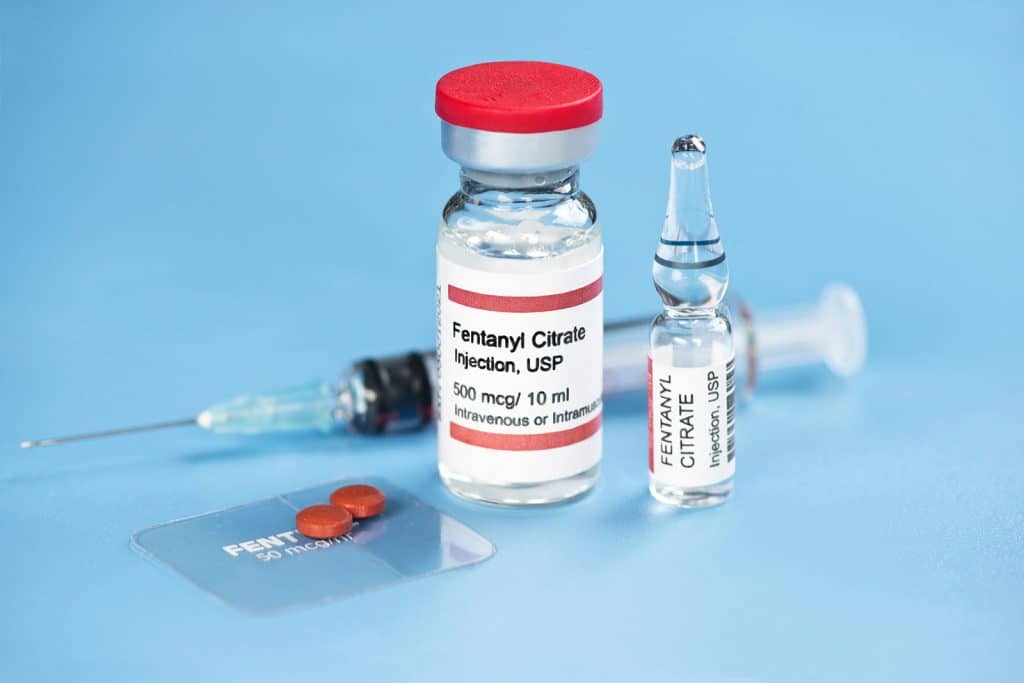Fentanyl is a synthetic opioid drug. It is often prescribed by physicians to treat severe pain. It is exceptionally strong and is 50 times more powerful than heroin. This makes it highly addictive. Regular fentanyl use can cause quick opioid dependence or known as fentanyl addiction. When you or your loved one stops fentanyl suddenly, he or she will experience terrible opioid withdrawal symptoms, resulting in life-threatening situations. To become sober, it is best to take advantage of medical professional detoxification (medical detox) and treatment option interventions. At Garden State Treatment Center, patients have the opportunity to receive assistance in addiction treatment in a safe environment.
Table of Contents
WHAT IS FENTANYL WITHDRAWAL?
Fentanyl triggers the brain to release endorphins. These hormones make the body feel good. Also, they bring a “euphoric” high to the brain. When the drug leaves the body, the sensation is gone. However, the desire to repeat this feeling remains strong. Seeking more of the drug kicks off a destructive cycle. After dependency develops, it becomes difficult to stop using. The body begins the withdrawal process. Severe symptoms may develop as a person’s system gets used to a lack of fentanyl.

SYMPTOMS OF FENTANYL WITHDRAWAL
Numerous symptoms occur during fentanyl withdrawal. These may be quite uncomfortable and dangerous.
- Runny Nose
- Anxiousness
- Moodiness
- Heightened Pain
- Intense Sweating
- Stomach cramping or discomfort
- Vomiting/Diarrhea
These disturbing symptoms may turn a person back to using the drug. In extreme cases, an individual may experience debilitating muscle and joint pain. Also, depression and agitation may result. For these reasons, it is advised to have professional help during the detox process.
FENTANYL WITHDRAWAL TIMELINE
A withdrawal timeline is not set in stone. Two people may have different reactions. However, there is a general way that things unfold. Unlike other opioids, fentanyl is slowly released in the blood and remains longer in a person’s body. After the drug is ceased, it may take longer to reach its half-life. This means that withdrawal symptoms may not begin immediately. Also, an individual who has used fentanyl for an extended period may have worse symptoms that last longer.
- First 24 Hours. Mild symptoms tend to begin during the first day after fentanyl is stopped. A person may feel a loss of appetite, insomnia, and headaches. Drug cravings start to develop as well.
- 24 to 48 Hours Later. Physical symptoms begin to intensify. An individual may have panic attacks, sweat excessively, and experience abdominal cramping. Usually, symptoms begin to decrease at the end of this period.
- Days 5 to 8 Later. After a week of withdrawal, a person will feel a bit better. However, cravings and anxiety may persist for months.
FENTANYL WITHDRAWAL CAUSES AND RISK FACTORS
Specific causes and risk factors connect a person’s vulnerability to fentanyl usage. To begin, research turns to genetics. People with family members with misuse disorders are more likely to develop these types of problems than individuals without a family history. Also, scientists have linked certain personality traits and risk factors to opioid misuse.
- Being prescribed fentanyl for pain
- Living in an environment where substance misuse is common
- Impulsive temperament
- Previous drug misuse
- Easy access to fentanyl
- Past family history of addiction
FENTANYL WITHDRAWAL TREATMENT AND DETOX
Certain people recognize fentanyl misuse problems and decide to quit suddenly and without help. Unfortunately, going cold turkey is not advised. This drug lowers an individual’s breathing, heart rate, and blood pressure. When a person suddenly stops taking fentanyl, blood pressure may spike and cause a heart attack or stroke. Also, withdrawal brings painful symptoms, which can lead to relapse. For these reasons, professional detox is recommended.
Many facilities provide medically assisted detox. Physicians develop a schedule that allows patients to wean off fentanyl safely. Constant supervision is given so that health can be monitored. In some instances, other medication-assisted treatments are prescribed to ease the detox process and to make a person as comfortable as possible.
- Clonidine. This drug is traditionally used to lower blood pressure. It blocks the effects of opioid overdose.
- Buprenorphine. This medication works like methadone. It blocks the brain’s opioid receptors, which alleviates some withdrawal symptoms.
- Methadone. This drug is a synthetic opioid agonist that lowers a person’s pain. This alleviates cravings for fentanyl and other opioids. In other words, symptoms of opioid withdrawal are less devastating.
SEEKING HELP AT GARDEN STATE TREATMENT CENTER
When an individual admits to misusing fentanyl, it is essential to seek help from a trusted source. The National Center for Drug Abuse released figures that show the growing number of opioid-related deaths each year. The world is facing a severe problem that requires professional expertise.
At Garden State Treatment Center, a detox center for substance abuse or drug use, we help patients successfully complete treatment programs like detox so that future recovery is possible. Professional detox maintains safety and raises the chances of experiencing a positive outcome. Our facility allows individuals to wean away from fentanyl abuse, opioid use disorder, and other substance use disorders and be stabilized by certain medications through withdrawal management with proper healthcare service.
After the detox program, our facility offers a calm and relaxing setting for further treatment. All patients are fully supported throughout the challenging process. For more information about fentanyl detox and treatment, contact us today.
FAQ
How long does fentanyl stay in your system?



